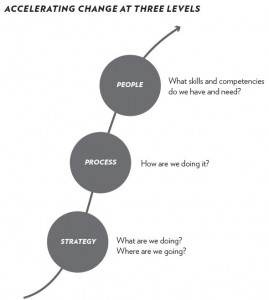
Social media has evolved the way marketers can identify new and expand engagement to more influencers (as I explained in Part I of this series), but that’s only the start of the relationship. Managing both online and offline interaction is key for forging strong, meaningful relationships that will truly benefit your brand. The challenge lies in learning how to harness the power of social media to build engagements, while keeping track of multiple prospects through a coordinated, transparent approach.
Managing engagement with thought leaders isn’t complicated, but to be effective, the effort has to be consistent, reliable, and organized.
Consistent: Determine Functional Ownership
Once you’ve identified your influencers, determine who in your organization will own the relationship. Generally, there are set “swim lanes” when it comes to various outlets and ownership. For instance, traditional news outlets are owned by public relations, and industry analysts are owned by analyst relations; ownership is specialized to cater to and support the specific needs of those relationships. The same is true for this newer breed of influencer who’ve built their identity online.
The goal of ownership is to ensure consistency in engagement and further the relationship, helping to move influencers progressively through awareness, credibility, emotional connection, loyalty and advocacy. While ownership might me one primary contact overseeing the relationship, it doesn’t limit the relationship to only that primary owner. It’s important for the engagements with influencers to be relevant and specific, which often means involving subject matter experts to enrich the touch points and continue to build the relationship.
Reliable: Activate Key Employees to Build Trust
Just like a real-world relationship, engaging with influencers is not a one-way street. Connecting is one thing, but building meaningful relationships with influencers is quite another. By sharing relevant content, insight, and more, employees can start to build dialogue, earning credibility and trust.
Consistent engagement is good, but rather than a forced cadence, focus on making sure engagements are meaningful. Offering a reliable resource underscores trust in your brand that will prompt influencers to do just as you hope: influence others.
Organized: Create a System to Develop, Track and Grow Engagements
While engagements with influencers should be genuine, it’s also important to keep track of how and when you engage – especially if your influencer relations team comprises more than one person. There are countless ways to coordinate management, but here are the components of what I consider to be a good solution for managing and tracking influencer engagement:
- Record management: centralized contact base, influencer profiles, business groups, permission-based access
- Workflow rules and management: assign tasks, alerts, rules-based notifications
- Collaboration: cloud access, multiple language support, easy to use UI, mobile interface
- Reporting: lead gen reporting, share of voice reporting, ad-hoc reporting
This system could be built on something as simple as Excel or a QuickBase or as complex as your company’s CRM database. The goal is to have records on the time and resources spent in managing the influencers to better measure the value of those relationships – which I’ll explain in part III of this series.
How does your organization manage your online influencer programs?
Business & Finance Articles on Business 2 Community
(389)





